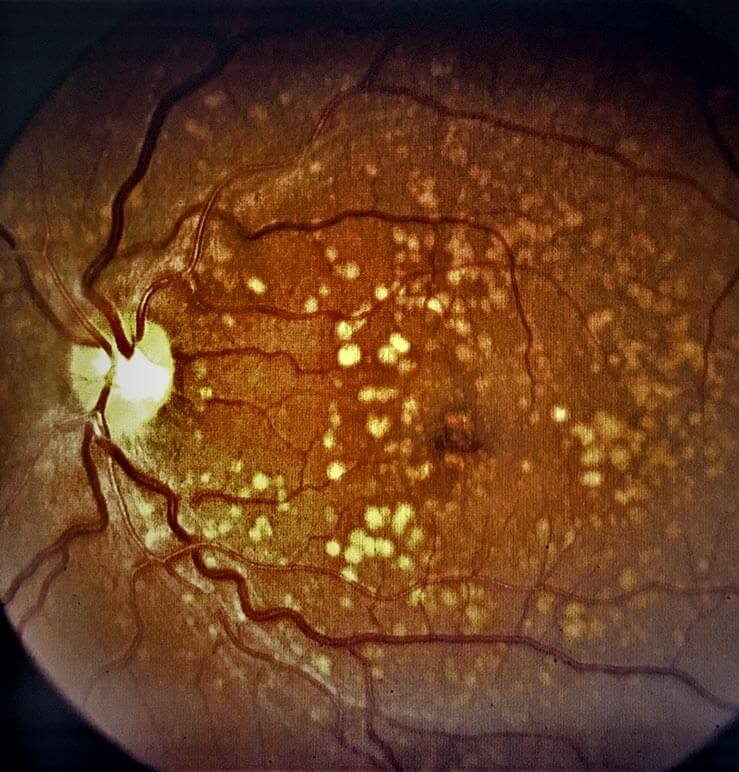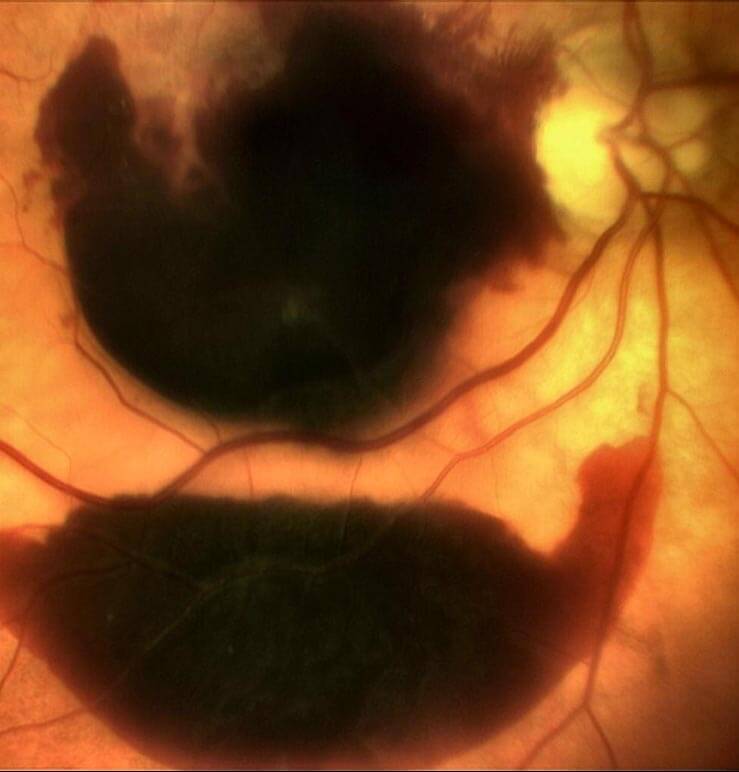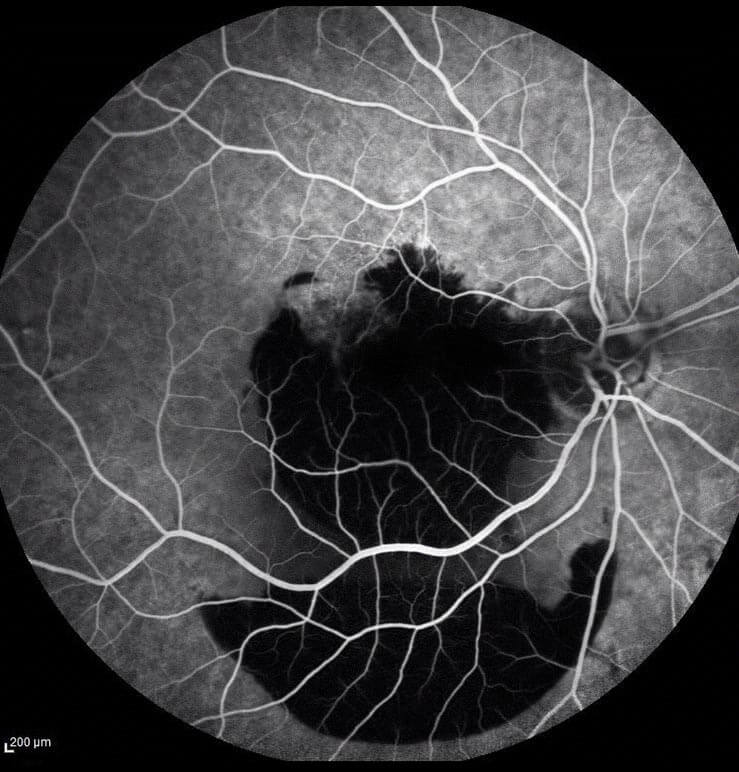
There are two types of Macular Degeneration: Dry, or Non-exudative Macular Degeneration and Wet Macular Degeneration, or Exudative Macular Degeneration. Macular Degeneration affects the macula, which is the area of the eye that is responsible for sharp, detailed vison, color perception and intensity.

The first symptoms of Dry-AMD develop without pain and are gradual. A person with early symptoms may notice:
Dry and Wet Macular Degeneration can affect one, or both eyes. Often, people with AMD in one eye do not notice the signs of the disease because the good eye will compensate for the affected eye. Macular degeneration does not affect the peripheral (side vision), and rarely causes total blindness in patients diagnosed with the disease. It is important for you to schedule a dilated fundus examination if you, or a family member notices any of the signs of AMD.
Your general ophthalmologist or optometrist may notice drusen in a dilated retina examination and refer you to a retina specialist for a thorough retinal evaluation.
Drusen are yellow deposits of lipid and proteins under the retina. Drusen can be small or large and may not progress to Dry or Wet-AMD. Large drusen is a sign of macular degeneration and should be monitored by a retina specialist.
Drusen can also be found in the optic nerve. Optic nerve head drusen are comprised of protein and calcium salts. Drusen of the optic nerve is usually bilateral (both eyes), can be inherited, are not related to aging, and can affect peripheral vision. Drusen of the optic nerve is not macular degeneration.
Patients who are diagnosed with Dry AMD may not progress to Wet (neovascular) Macular Degeneration and should be monitored closely by a retina specialist or eye care professional.
If you have been diagnosed with Dry AMD and notice any changes in your vision you should call your retina specialist to schedule an examination as soon as possible.






Wet or Exudative Macular Degeneration is the most severe form of macular degeneration and is the leading cause of vision loss in patients over the age of 60 in the United States. As with Dry Macular Degeneration, you may not notice the gradual onset of wet macular degeneration, as the non-affected eye may compensate for the eye with new blood vessel growth. If you notice sudden changes in your vision, schedule an appointment with your retina specialist as soon as possible. With early treatment, patients with wet macular degeneration have a good prognosis of retaining or regaining vision.
Wet Macular Degeneration is caused by abnormal blood vessels growing under the retina in portion of the retina called the choroid. These blood vessels may leek or bleed elevating the macula. When the macula fills with fluid or blood the patient will notice a dark spot, significantly blurred, or distorted central vision. Vision loss can be rapid and severe when the blood vessels leak fluid in the macula if left untreated.
Although the exact cause of macular degeneration is not unknown, risk factors for developing the disease are:
There are several treatment options for patients with Wet AMD Treatments for Wet Macular Degeneration can be performed in the office or procedure room. The treatments include:
Anti-Vascular Endothelial Growth Factor Therapy, (Anti-VEGF) intravitreal injections are injections given to decrease the hormone that stimulates vessel growth causing wet macular degeneration.
Photo Dynamic Therapy, (PDT) PDT is a combination procedure of a photodynamic dye and a cold laser used to target the leaking blood vessels that cause Wet AMD. Photodynamic dye is injected into the patient’s bloodstream and the cold laser targets the dye and seals the vessels. Patients will be asked to avoid direct sunlight for several days after the procedure.
Laser Photocoagulation can be used to target leaking blood vessels that cause the fluid leakage into the macula.
Your retina specialist will discuss all the treatment options available and create an individualized treatment plan for your needs.
21 Crossroads Drive
Suite 425
Owings Mills, MD 21117